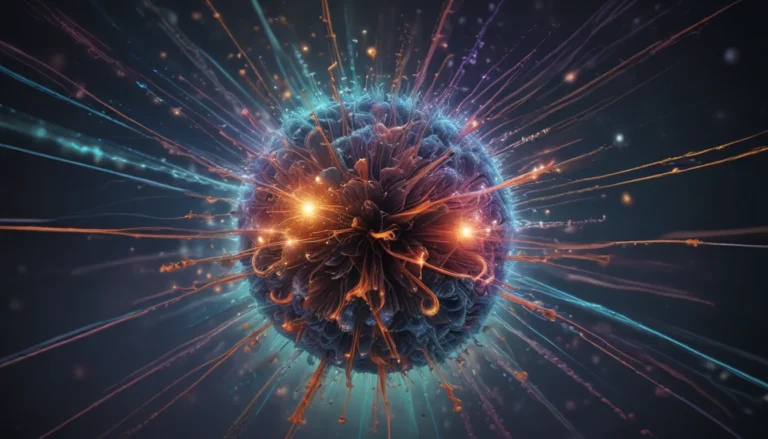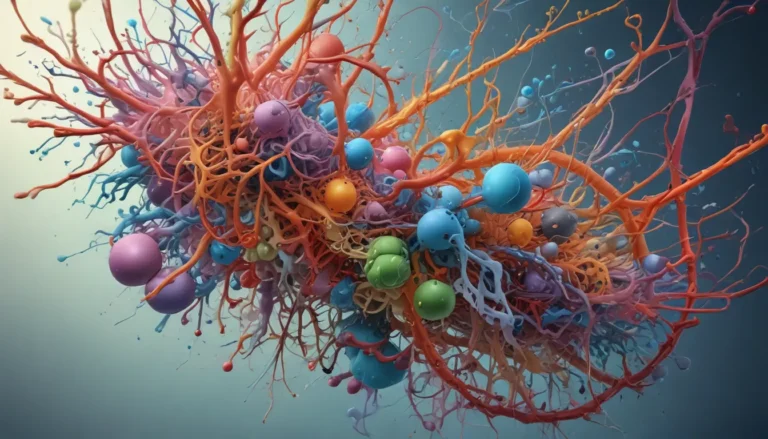A Note About Images: The images used in our articles are for illustration purposes only and may not exactly match the content. They are meant to engage readers, but the text should be relied upon for accurate information.
Welcome to the mesmerizing world of the Calvin Cycle, a fundamental metabolic pathway that drives the process of photosynthesis in plants. Named after the pioneering scientist Melvin Calvin, this biochemical marvel is pivotal in converting carbon dioxide into glucose, thereby fueling life on Earth. But beyond its basic function lies a treasure trove of intriguing facts and insights that illuminate the intricate workings of this remarkable cycle. Join us on a journey as we unravel 17 mind-blowing facts about the Calvin Cycle, from its discovery to its profound impact on global carbon fixation. Let’s embark on this enlightening exploration of the Calvin Cycle and enhance our understanding of this vital biochemical process.
Unveiling the Calvin Cycle: A Gateway to Plant Growth and Survival
- The Calvin Cycle serves as a vital process where plants orchestrate the transformation of carbon dioxide and water into glucose and oxygen, essential for their growth and the preservation of Earth’s climate balance.
- Melvin Calvin’s groundbreaking revelation of the Calvin Cycle revolutionized our comprehension of how plants harness sunlight to generate energy, laying the foundation for life on our planet.
The Calvin Cycle Demystified: An Intricate Series of Biochemical Reactions
The Calvin Cycle represents a cornerstone of photosynthesis, where plants effectively convert carbon dioxide and water into glucose and oxygen, propelling their growth and sustenance.
Melvin Calvin: The Visionary Behind the Calvin Cycle’s Discovery
In the 1950s, the esteemed American chemist Melvin Calvin unraveled the intricacies of the Calvin Cycle during his research endeavors at the University of California, Berkeley.
The C3 Cycle Moniker: Shedding Light on the Calvin Cycle’s Identity
The Calvin Cycle is commonly known as the C3 cycle due to the generation of a three-carbon compound, 3-phosphoglycerate, as its initial product.
A Closer Look at the Calvin Cycle’s Setting: The Stroma of Chloroplasts
Within the chloroplast’s fluid-filled region, known as the stroma, the Calvin Cycle unfolds alongside other photosynthetic stages, orchestrating the plant’s energy production.
Illuminating the Calvin Cycle’s Light-Independent Operation
Unlike the light-dependent reactions of photosynthesis, the Calvin Cycle operates autonomously, unfazed by light availability, thereby seamlessly functioning in various environmental conditions.
Powering the Calvin Cycle: The Role of ATP and NADPH
ATP and NADPH, generated during the light-dependent reactions, act as energy carriers vital for driving glucose synthesis within the Calvin Cycle’s framework.
RuBisCO: The Key Player in Carbon Fixation
Recognized as the Earth’s most abundant enzyme, RuBisCO plays a pivotal role during the Calvin Cycle, facilitating the fixation of carbon dioxide.
Navigating the Calvin Cycle’s Steps: From Carbon Fixation to Glucose Production
- Carbon Fixation: The cycle initiates as carbon dioxide merges with the five-carbon sugar RuBP, yielding an unstable six-carbon compound that rapidly divides into 3-phosphoglycerate.
- Reduction: Subsequently, through the deployment of ATP and NADPH, the cycle transforms 3-phosphoglycerate into glyceraldehyde-3-phosphate (G3P).
- Regeneration: Opting for regeneration, select G3P molecules are repurposed into RuBP through ATP, while others are allocated for glucose and carbohydrate synthesis.
The Calvin Cycle’s Yield: Unveiling the Glucose Production
For every six carbon dioxide molecules processed, the Calvin Cycle delivers one molecule of glucose, showcasing its pivotal role in sustaining plant life.
Harmonizing with Nature: The Calvin Cycle’s Environmental Sensitivity
Dynamic factors such as temperature, light levels, and carbon dioxide availability influence the Calvin Cycle’s efficiency and pace within plant systems.
Evolutionary Marvels: Optimizing the Calvin Cycle through Adaptations
Certain plant variants, such as C4 plants and CAM plants, have evolved distinct pathways to enhance carbon fixation efficacy and minimize water loss, exemplifying nature’s ingenious adaptability.
The Calvin Cycle’s Metamorphosis: A Revolutionary Insight into Photosynthesis
Melvin Calvin’s epoch-making elucidation of the Calvin Cycle reshaped our comprehension of how plants harness sunlight, ushering in a new era of scientific enlightenment.
The Calvin Cycle’s Global Impact: Nurturing Earth’s Ecosystem
Central to Earth’s sustainability, the Calvin Cycle underpins the flourishing of diverse life forms, articulating the interconnected web of plants and animals reliant on its metabolic prowess.
Embarking on a Biochemical Odyssey: Uncovering the Calvin Cycle’s Significance
In essence, the Calvin Cycle stands as a captivating and indispensable facet of biochemical science, enabling plants to harness carbon dioxide for glucose synthesis, sustaining their vitality. Grasping the nuances of the Calvin Cycle paves the way for groundbreaking research and innovative solutions in plant growth optimization and environmental conservation.
Frequently Asked Questions
- What is the Calvin Cycle all about?
-
The Calvin Cycle represents a series of biochemical reactions occurring within the chloroplasts of plants, algae, and select bacteria, converting carbon dioxide into glucose utilizing light energy absorbed during photosynthesis.
-
How many steps compose the Calvin Cycle?
-
The Calvin Cycle comprises three primary phases: carbon fixation, reduction, and regeneration. These sequential steps culminate in the production of crucial carbohydrates for plant sustenance.
-
Why is Rubisco pivotal in the Calvin Cycle?
-
Rubisco, or ribulose-1,5-bisphosphate carboxylase/oxygenase, assumes a critical role as an enzyme facilitating carbon dioxide conversion during the cycle’s carbon fixation phase.
-
How does the Calvin Cycle intersect with other metabolic processes?
-
Intricately intertwined with photosynthesis, the Calvin Cycle relies on products like ATP and NADPH from light-dependent reactions to power its glucose synthesis, further branching into diverse metabolic pathways.
-
What makes the Calvin Cycle a vital cog in plant ecosystems?
-
Fueling essential plant functions, the Calvin Cycle enables the transformation of carbon dioxide into glucose, serving as a cornerstone of energy production and atmospheric carbon regulation.
-
Are there alternative pathways akin to the Calvin Cycle?
- Indeed, alternative pathways like C4 and CAM plants offer innovative strategies for heightened carbon fixation efficiency and reduced water loss, showcasing nature’s adaptive brilliance.
As we partake in this enriching journey through the realms of the Calvin Cycle, our collective pursuit of knowledge and understanding emerges as a testament to our shared curiosity and reverence for the wonders of nature’s biochemical tapestry. Let us continue to celebrate and explore the marvels of the Calvin Cycle, nurturing our appreciation for the intricate mechanisms that underpin life’s vibrant tapestry. Join us in our quest for discovery and enlightenment, as we navigate the boundless landscapes of science and unveil the secrets of the botanical world.





